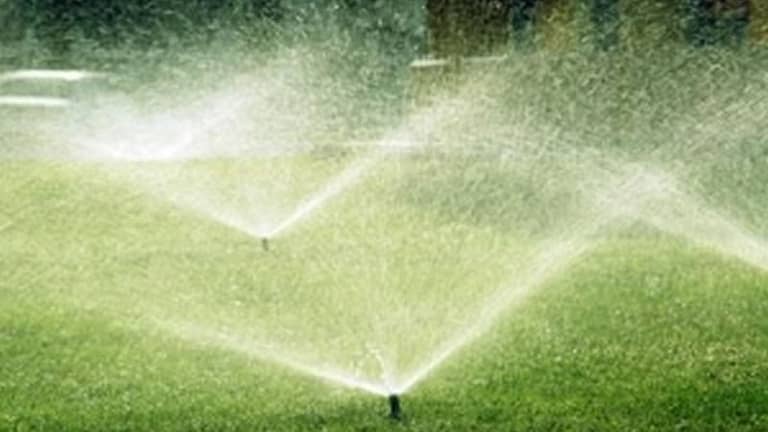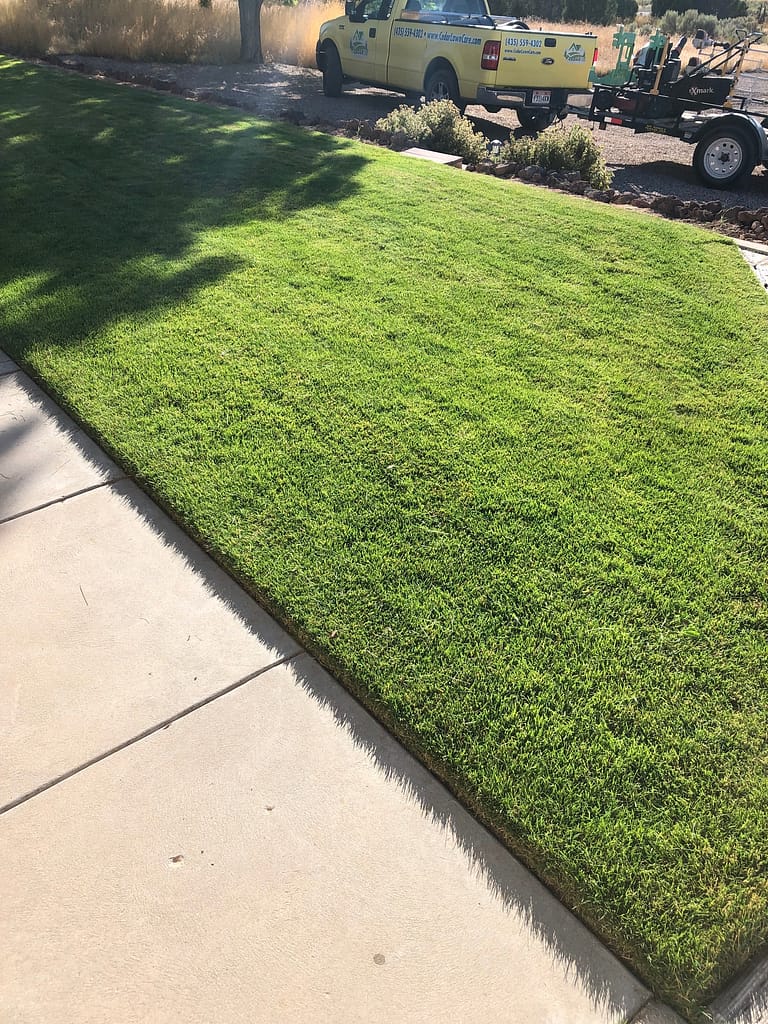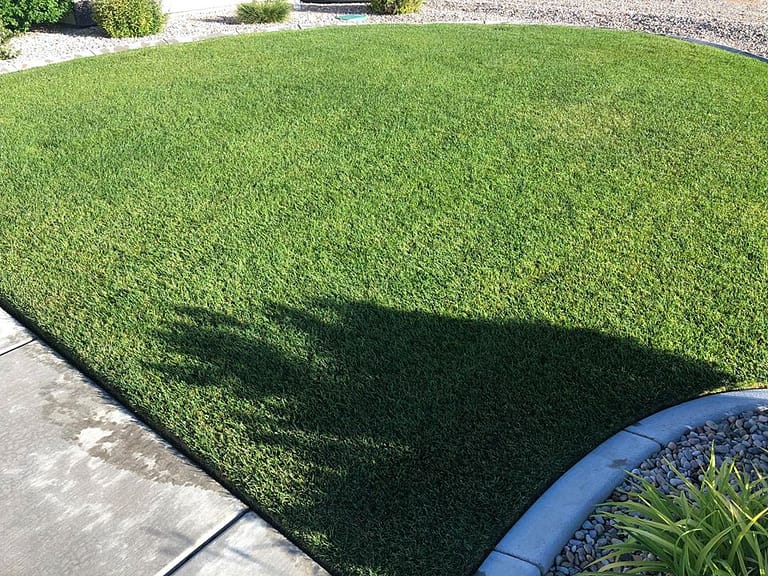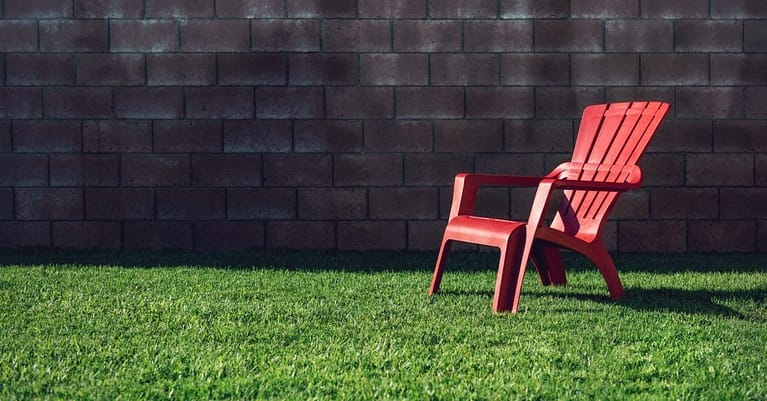Lawn Mowing 101
While mowing your lawn may seem like a task that’s hard to mess up, there is actually a lot of room for error in your mowing techniques. From mowing too short to using dull blades, the way you mow matters. Here are some important tips and considerations when it comes to mowing your lawn:
Ideal Length and Frequency
The ideal length for your grass depends on the type of grass you have. Fescue and bluegrass should be kept at about 2.5 to 3.5 inches tall. For residents of St. George and the surrounding area, we recommend a fescue blend of seed for your grass. Fescue is a cool-season grass that is incredibly drought-tolerant and easy to maintain.
Mowing frequency depends on how fast your grass grows. Most homeowners find that once a week is the sweet spot for mowing during high growth seasons, typically spring and early fall. However, as grass growth can slow in the summer months you may be able to go longer. It may also be advisable to let your grass grow a little longer during drought, so be sure to keep these considerations in mind.
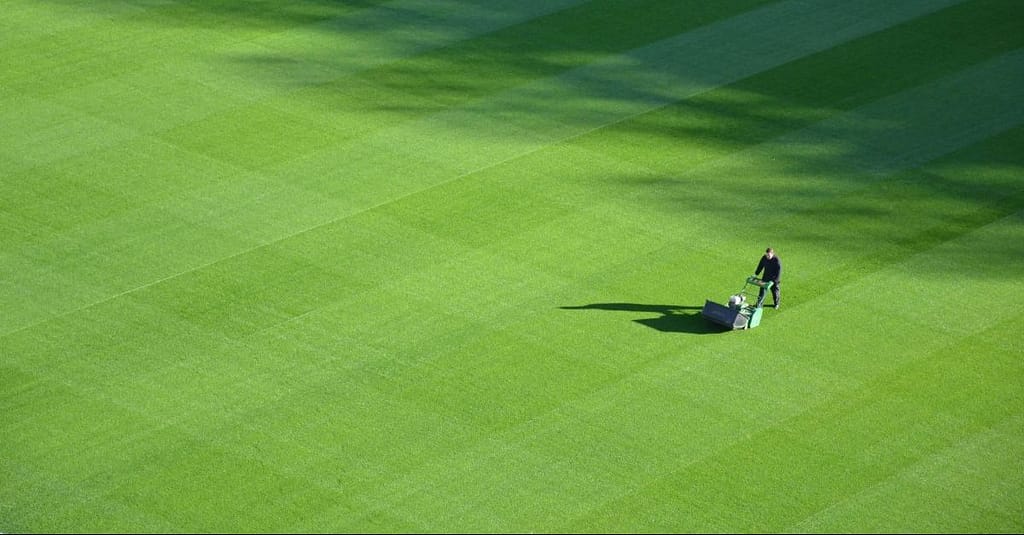
Golden Rule
Known as the “golden rule” of lawn mowing, you never want to remove more than ⅓ the length of a blade of grass in one mowing session. The blade is the only part of the grass that can photosynthesize so removing more than ⅓ of the blade can cause the grass to thin, yellow, or die. Remember this rule when planning your mowing frequency and balancing it with the ideal length for your grass.
Mowing Patterns
You may have a set routine when it comes to the way you mow your lawn, but it’s important to not follow the exact same pattern every time you mow. Changing up your pattern reduces soil compaction and can improve your lawn’s appearance. For example, you can mow parallel to the street then next time switch to a 45 degree angle.
Clippings
When it comes to dealing with your grass clippings, you may be tempted to bag them and throw them out. While this may be necessary occasionally, more often than not it’s best to leave the clippings on the grass. As long as you’re following the ⅓ rule, you’ll only be cutting the leaves not the stems. This provides your lawn with essential nutrients and reduces your fertilizer needs. For more information on bagging vs mulching, click here for our helpful guide.
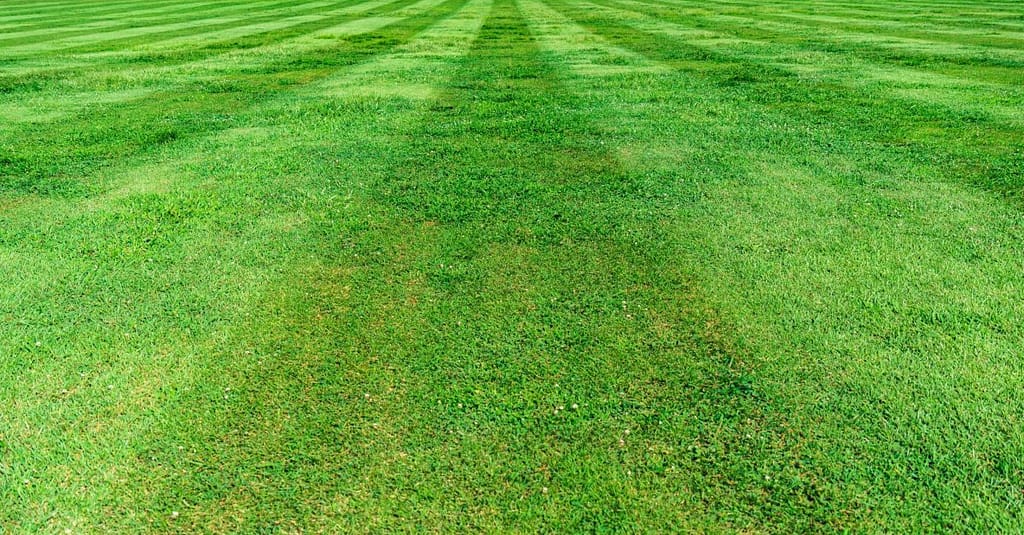
Tips and Tricks
It’s absolutely essential that you’re cutting your grass with sharp mower blades. Typically, you’ll want to replace your mower blades once a year. While this may feel excessive to some homeowners, your lawn will thank you. Cutting with dull blades tears the grass rather than slicing it which can cause yellowing and damage the lawn.
Never cut your lawn when it’s wet. Doing so can cause ruts or other unevenness in your soil, which in turn can cause drainage issues and negatively impact how your lawn looks. Mowing your lawn wet can also leave it more susceptible to some diseases.
Hire the Best
If you don’t have the time or energy for lawn care (or just don’t want to deal with it yourself), hiring a professional lawn care company is an excellent option. Hiring Cedar Lawn Care pays for itself in giving you back your weekends to spend with the people who matter instead of spending all day Saturday mowing your lawn. Hiring the pros means you can rest comfortably knowing we’re following the best practices to keep your lawn healthy and beautiful.
Knowing the ideal length for your grass type, finding a good frequency so you’re never removing too much of the blade at once, and following the rest of the tips in this guide will help you keep your lawn looking its best. If this feels too overwhelming, reach out to Cedar Lawn Care today to see how we can take this chore off your shoulders!


